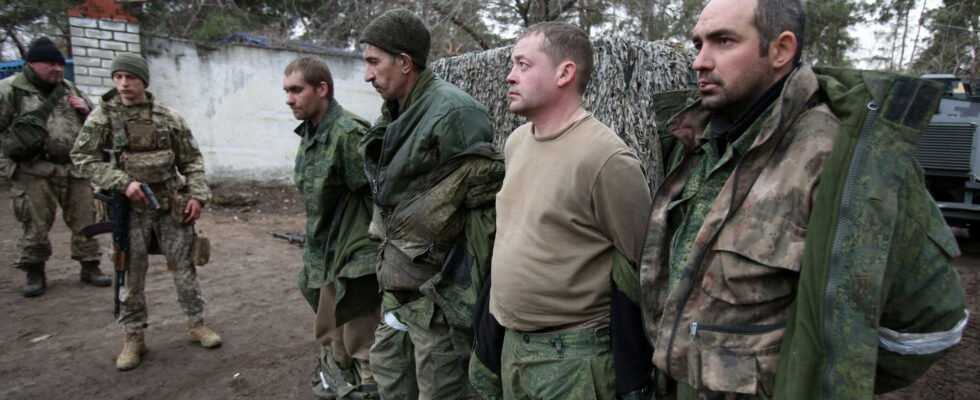On the tenth day of the Russian invasion, the Ukrainians on Saturday postponed the evacuation of civilians from the strategic port of Mariupol, citing ceasefire violations by Russian forces. The latter have also resumed hostilities against the besieged city at the very beginning of the evening.
The main information to remember:
- The strategic port of Mariupol, in eastern Ukraine, is subject to a “blockade” by the Russian army
- The offensive on Mariupol resumed
- The Russians occupy the nuclear site of Zaporizhya, the largest atomic power plant in Europe
Mariupol evacuation postponed
The Russian military has resumed the “offensive” after the evacuation of civilians from two besieged towns in southeastern Ukraine was postponed, Russian Defense Ministry spokesman Igor Konashenkov said on Saturday. . “Due to the reluctance of the Ukrainian side to influence the nationalists or extend the ceasefire, offensive operations have resumed since 6 p.m. Moscow time,” or 3 p.m. GMT, he said in a message. video.
Russia announced earlier on Saturday a ceasefire and the opening of humanitarian corridors to evacuate civilians from the strategic port of Mariupol and the nearby town of Volnovakha. “Not a single civilian was able to leave Mariupol and Volnovakha along the announced security corridors. The population of these towns is being held by nationalist formations as human shields,” the Defense Ministry spokesman added. He also said that “nationalist battalions” had used the ceasefire to “regroup and strengthen their positions”.
At least 350 civilians and more than 9,000 Russian soldiers killed
After ten days of war, the balance sheet is impossible to verify independently. Kiev reports at least 350 civilians and more than 9,000 Russian soldiers killed, without mentioning its military losses, and Moscow mentions 2,870 dead on the Ukrainian side and 498 in its ranks. Nearly 1.37 million people have fled Ukraine since the start of the Russian invasion on February 24, according to the latest UN counts, prompting a strong mobilization in the border countries, in particular Poland where delivered on Saturday by US Secretary of State Antony Blinken.
“The scenes unfolding today in Mariupol and other cities are heartbreaking,” the ICRC said, calling on warring parties to protect civilians in Ukraine. In 2014, Mariupol, a city of some 450,000 inhabitants located on the Sea of Azov, had resisted the assaults of pro-Russian forces from Donetsk in particular.
Moscow announces a ceasefire for the evacuation of civilians from Mariupol
Russia announced a ceasefire on Saturday to allow the evacuation of civilians from two cities in eastern Ukraine, including the encircled strategic port of Mariupol, after consultations between representatives of Kiev and Moscow. From 7 a.m. GMT, “the Russian side declares a regime of silence (of arms) and the opening of humanitarian corridors for the evacuation of civilians from Mariupol and Volnovakha”, the Russian Defense Ministry said, quoted by Russian news agencies.
The ministry said the location of the humanitarian corridors and exit points had been determined in agreement with the Ukrainian authorities, according to the agencies.
“Bodies everywhere”
“Last night, the bombardments intensified and came closer together,” a member of the NGO Médecins sans frontières (MSF) who was still there told AFP, adding that the inhabitants lacked everything: water – to the point of having to collect and melt snow to have -, electricity and food, the bombardments having destroyed many stores. The siege of Mariupol comes as Russian forces close in on the capital Kiev, encountering stubborn resistance and sometimes bombarding apartment buildings, including in Cherniguiv, 150 km north of the capital, where dozens of civilians were killed in recent days.
An AFP team which went there on Saturday saw scenes of devastation in residential neighborhoods – while Moscow says it is not targeting them – in this city of 300,000 inhabitants which was emptying of its inhabitants, raising fears of a similar fate for Kiev once the Russian missile batteries and artillery at the gates of the capital. “There were bodies everywhere on the ground. They were queuing for the pharmacy here, here, and they all died,” testifies Sergei, a survivor still completely disoriented by the continuous howl of sirens, warning of an imminent strike.
On Saturday morning, Ukrainian Defense Minister Oleksiy Reznikov admitted that the Russians had advanced in several directions, while claiming that they controlled only a “small portion” of territory. He accused Moscow of changing tactics and going after civilians after encountering strong Ukrainian resistance, which he said undermined Russian plans to invade major cities and quickly overthrow the president’s government. Volodymyr Zelensky.
The latter continued to challenge Moscow and said on Saturday that Ukrainian forces had launched a counter-attack around Kharkiv (north), the country’s second city, the scene of some of the most intense bombardments since the start of the war. The Russian army, which continues to bombard the area around Kiev in the northwest and east in particular, has occupied the Zaporozhye nuclear power plant (south) since Friday, where artillery strikes, according to the Ukrainians, have provoked a fire – which Moscow denies being the cause – raising fears of a catastrophic nuclear accident.
Russian army occupies Ukrainian nuclear power plant
The Russian army has occupied since Friday the nuclear power plant of Zaporijjia, in the south-east of Ukraine, where strikes from its artillery, according to the Ukrainians, caused a fire – which Moscow denies being at the origin. This attack against the largest nuclear power plant in Europe constitutes “an immense threat for all of Europe and the world”, reacted Friday to the UN Security Council the American ambassador Linda Thomas-Greenfield.
“We survived a night that could have ended history. History of Ukraine. History of Europe”: an explosion at the Zaporizhia power plant in southern Ukraine , would have been the equivalent of “six Chernobyl”, alarmed Ukrainian President Volodymyr Zelensky, who is to address the US Senate on Saturday by videoconference.
